Maharajah Sawai Jai Singh II, who founded Jaipur ensured the presence of large public squares at the crossing of arterial roads in the layout of the city. Squares in the local language are called Chowk or Chaupar. There are three public squares or chowk in old Jaipur city, namely Badi Chaupar/ Manak Chowk, Choti Chaupar/ Amer Chowk, and Ramganj Chaupar. Out of these three, Badi Chaupar & Choti Chaupar were the most prominent ones. In my previous post, Jaipur Then & Now- Hawa Mahal I had posted pictures of Badi Chaupar. Here are pictures shot from Chhoti Chaupar overlooking Gangori Bazaar. This picture was shot by a Swiss photographer Martin Hürlimann 90 years ago.

Martin Hürlimann traveled across South East Asia and shot many pictures during his travels. He is fondly remembered for his pictures of European cities. A book tilted INDIA- Martin Hürlimann containing 352 pictures from India, shot by Martin Hürlimann was published in 1967.
Jaipur was founded according to ancient Shilp &Vastu Shashtra, therefore, Chhoti Chaupar like Badi Chaupar has temples in all four corners. In the above picture, a temple staircase can be seen leading to a gate with two stone elephants on either side. That’s Roop Chaturbhuj Temple.
Here is a current picture shot from Chhoti Chaupar overlooking the road which leads to Brahampuri through Gangori Bazar.
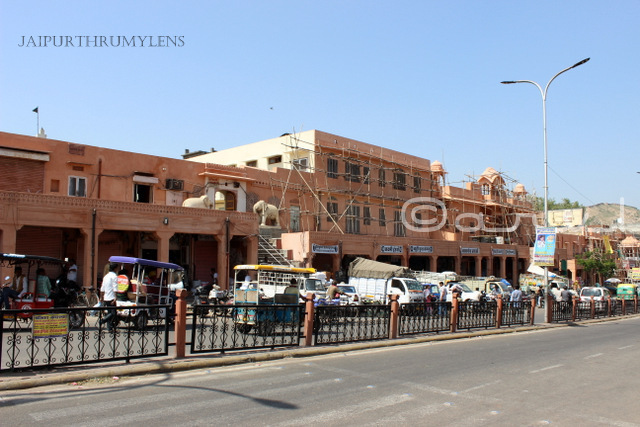
In stark contrast, loading vans, e-rickshaws, and other vehicles now line the shopfront. It is a thriving market full of grain and dry fruit wholesalers, among others. In the previous picture, one can see Nahargarh Fort sitting at the edge of the hill overlooking Jaipur city. But in the recent picture, it’s hidden behind new & unauthorized construction. Jaipur was famous for its uniform and beautiful market façade but that’s changing now with illegal and unauthorized construction, & encroachments all around. People care a least about heritage & symmetry which is clear from the second picture.
If you haven’t read my previous post on Roop Chaturbhuj Temple it is a good time to do so as it is an incredibly beautiful temple. I wrote this post two and a half years ago. Read Roop Chaturbhuj Temple, Jaipur!….Beautiful Frescos!
Here’s are pictures from this temple.
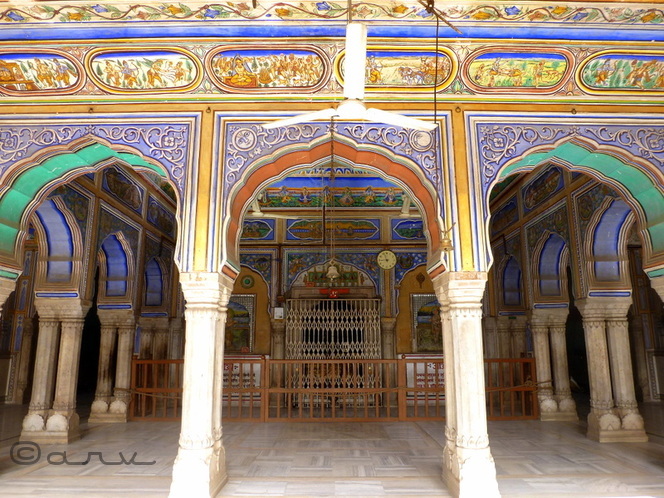
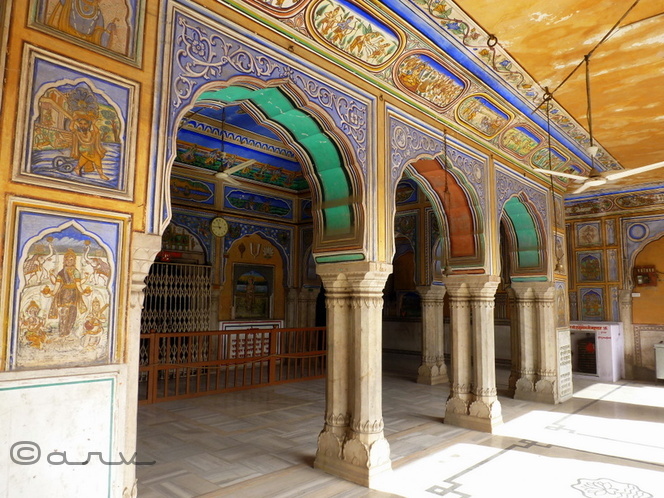
Inspiration for the “Jaipur Then & Now” series is 290 years of the founding of Jaipur city. The foundation of Jaipur was laid on 18 November 1727 AD as India’s first planned city by Maharaja Sawai Jai Singh II. Jaipur Then & Now aims at heritage conservation. Click Jaipur Then & Now to read all posts of this series
Also read: Why our attitude towards heritage needs a big change?
Stay updated with Jaipurthrumylens!! via: Facebook, Twitter, Instagram
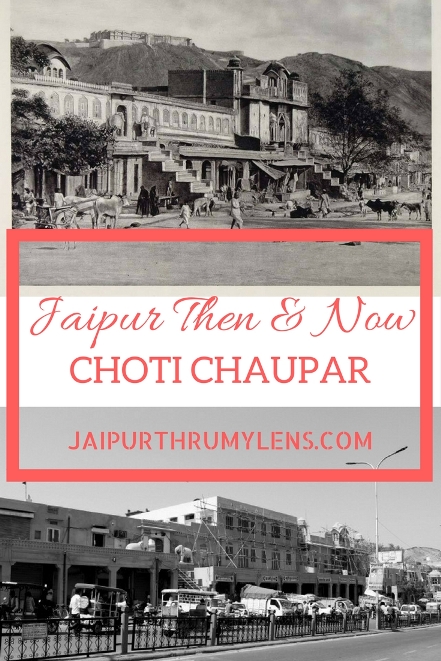
Picture source of Martin Hurlimann photo- www. columbia.edu
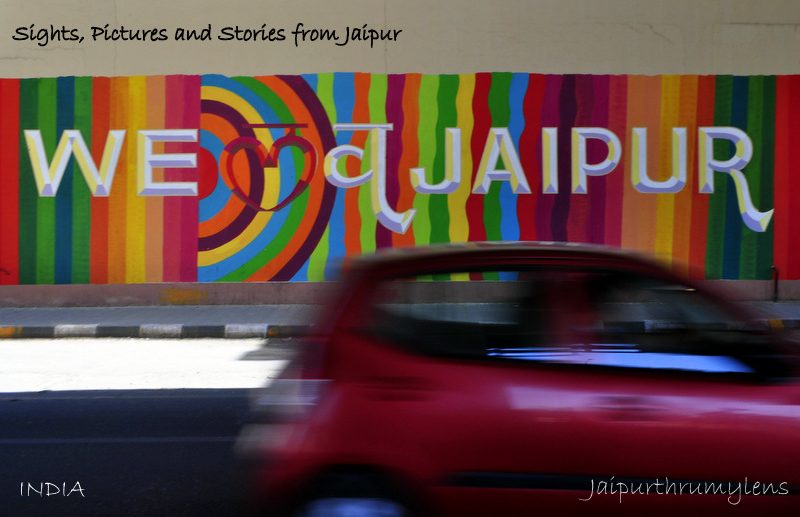
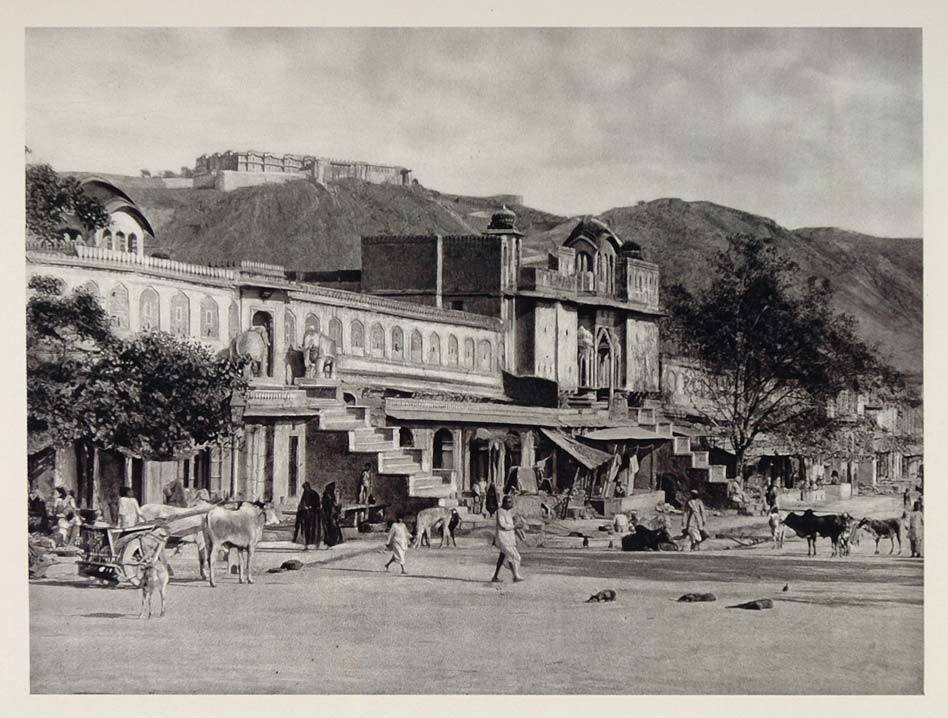
Another great read on the historical development of your home town Jaipur. When I saw the b/w photo taken in 1967, I was reminded of my start here in Canada 50 years ago. Thank you, Arv!
LikeLiked by 2 people
Thanks you for appreciating with your valuable comment. The picture here was captured 90 years ago, probably in 1927 or 1928. The reference for the year 1967 is when the compilation of Martin’s pictures were published in a book. Anyways, happy to hear that you have completed half a decade in Canada. 🙂
LikeLiked by 1 person
Thank you for the correction! I find it so kind of you to respond with information to correct a false impression on the part of your followers.
LikeLiked by 2 people
I thought it is better to have right information. 😃
LikeLiked by 1 person
Old photos are an invaluable treasure chest of history 💕 Great post. I have to go read your Roop chaturbhuj Temple post now
LikeLiked by 1 person
Indeed, these old pictures are also a reference point for all of us to compare the development of the city
LikeLike
Will await for your feedback on Roop Chaturbhuj temple 😃
LikeLike
Beautiful art work!
LikeLiked by 2 people
Indeed. Also check out post on Chaturbhuj Temple. you will love that too 🙂
LikeLiked by 1 person
It’s so fascinating to look back at old photographs of the city. How the landscape has changed – illegal construction, encroachment, the exponential increase in people – all of it takes its toll.
LikeLiked by 2 people
well mentioned. I think the original concept is long gone. we are merely hanging on!
Thanks for sharing your views! 🙂
LikeLike
I love that old picture you have shared of Choti Chauper…so fascinating and invaluable! How pictures preserve history! Thanks for being a part of this heritage arv. 🙂
LikeLiked by 2 people
These pictures are invaluable as we can chart the journey of city, population and developments. Although I prefer to call it a journey of destruction….destruction of beautiful heritage! The market front used to be beautiful with uniform facade. The owners of the building had guidelines to adhere. But now it is all about money and influence, you can get anything done as long as you have either or both of these. Thanks for sharing your thoughts. 🙂
LikeLiked by 1 person
You are so right arv…this apathetic attitude can be seen everywhere in India as far as unauthorised construction is concerned.
LikeLike
Another beautiful post. Loved your ‘Jaipur Then & Now’ series.
Keep sharing.
LikeLiked by 2 people
Thanks, Rupam. happy to hear that you liked Jaipurthenandnow series. Watch out for more. 🙂
LikeLiked by 1 person
Beautiful
LikeLiked by 1 person
Illegal constructions are destroying our country. Such a great post!
LikeLiked by 1 person
Thanks Shivangi. I know it is same scenario every where in our country.
LikeLike
Beautiful black and white photographs! Choti chopad was an inevitable part of my daily travelling while teaching. I liked the lively hustle bustle while waiting for city bus!
LikeLiked by 1 person
It has changed dramatically, Deeksha with the metro work. Did you visit this area recently during your Jaipur trip?
LikeLiked by 1 person
Arv, If I will be able to come during coming summer vacation, I will be visiting Jaipur after two years. Metro work has ruined badly many places in Bangalore also.
My visit to Jaipur is always short, so I prefer to spend time with parents ☺️
LikeLiked by 1 person
I understand. It is the same story everywhere. In Jaipur, it is being done in an area which has many heritage structures and everything was aesthetically planned when founded. That’s an irony. Nothing much we all can do.
LikeLiked by 1 person
Right. City goes through a lot many problems and metro doesn’t even start on scheduled time.
LikeLiked by 1 person
absolutely
LikeLike